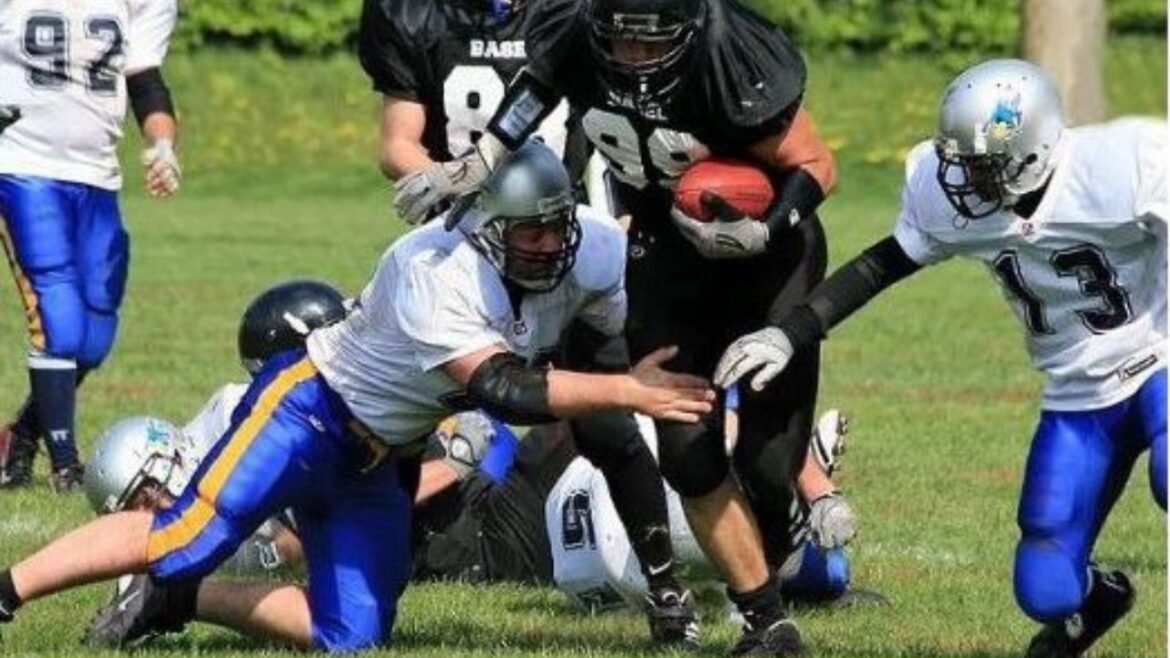In American football, each player has a specific job to do, depending on where they’re positioned. Football games involve a bunch of players, and they all have different roles on both the offensive and defensive sides of the field. Let’s take a look at the main offensive and defensive positions on football teams:
Offense
- Quarterback
- Running Back
- Fullback
- Wide Receiver
- Tight End
- Offensive Guard, Offensive Tackle
- Center
Defense
- Defensive Tackle
- Defensive End
- Outside Linebacker
- Middle Linebacker
- Cornerback
- Free Safety
- Strong Safety
Special Teams
- Kicker
- Punter
- Kick Returner
- Punt Returner
No matter which position you end up in, every position asks for a certain body type and set of abilities as you go into high school and beyond.
For instance, offensive and defensive linemen are usually the biggest players on the team, while playmakers and ball carriers like the running backs need a special mix of strength and speed. There are a few ways to test how strong and skilled you are to figure out which position might suit you best as a football player.
Figuring Out Your Football Position
First, measure exactly how tall and heavy you are.If you’re in high school and you’re roughly 6 feet 2 inches tall and weigh about 230 pounds, you might want to consider playing as an offensive lineman, defensive lineman, or linebacker. These positions need more physical strength, and bigger players can take and deliver harder hits to their opponents.
Now, if you’re a high school student and you’re around 5 feet 10 inches tall and weigh about 150 pounds, think about giving a shot to playing as a receiver, in the backfield as a running back, or even as a defensive back. These positions demand quickness and agility to get past blockers and reach the end zone for a touchdown, or to make interceptions, respectively.
Find Out How Fast You Can Run 40 Yards
- Place one pylon as a start line and another 40 yards away
- Have a friend time you and make sure they stand by the finish line
- Run as quickly as you can to the finish point
- During the high school football SPARQ Combine in 2011, some of the best players in the country took part. The fastest 20 times in the 40-yard dash were achieved by running backs, receivers, and defensive backs, reported ESPN Rise. The average time for the top 10 players was 4.42 seconds. If you can complete the 40-yard dash in 4.5 seconds or less, then running back, receiver, or defensive back positions might be suitable for you.
Test Your Ability with the Ball
- For positions like receiver and running back, especially at higher levels like college and the NFL, having only speed isn’t enough. You need to be skilled at catching the ball and handling it while avoiding defenders trying to stop you.
- Sprint 10 yards down the field, turn around, and have your friend throw you the ball
- Make sure the throws vary in height and difficulty to catch
If you’re able to catch most of them, you might have good ball skills for a receiver or running back role. An effective wide receiver can sometimes lack speed but still catch tough throws, even near the sideline or outside their usual catching area.
Think About Trying to Be a Quarterback, One of the Most Important Roles
The quarterback is the player who touches the ball in almost every offensive play, except for wildcat snaps. If you’re interested in this position, you should assess your throwing strength and accuracy.
- Get your friend to run about 10 yards forward and then cut diagonally to the left
- Throw the ball over his outer shoulder
- Make sure he does some long-running routes as well
- If you can throw the ball far enough without making the receiver slow down, you might have the strength and accuracy needed for the quarterback role
Quarterbacks also need to move quickly to avoid the opposing players trying to block their throws or to run planned plays. If you feel you need improvement in this area, practice jumping rope and running short, fast races.
Check Your Leg Power to See If You Could Be a Good Kicker
- Put the ball on a tee and just run up and kick it using your toe
- If you’ve played soccer, try a soccer-style kick
If your leg strength seems enough, get help from one of your coaches to understand the basics of place-kicking and punting.

